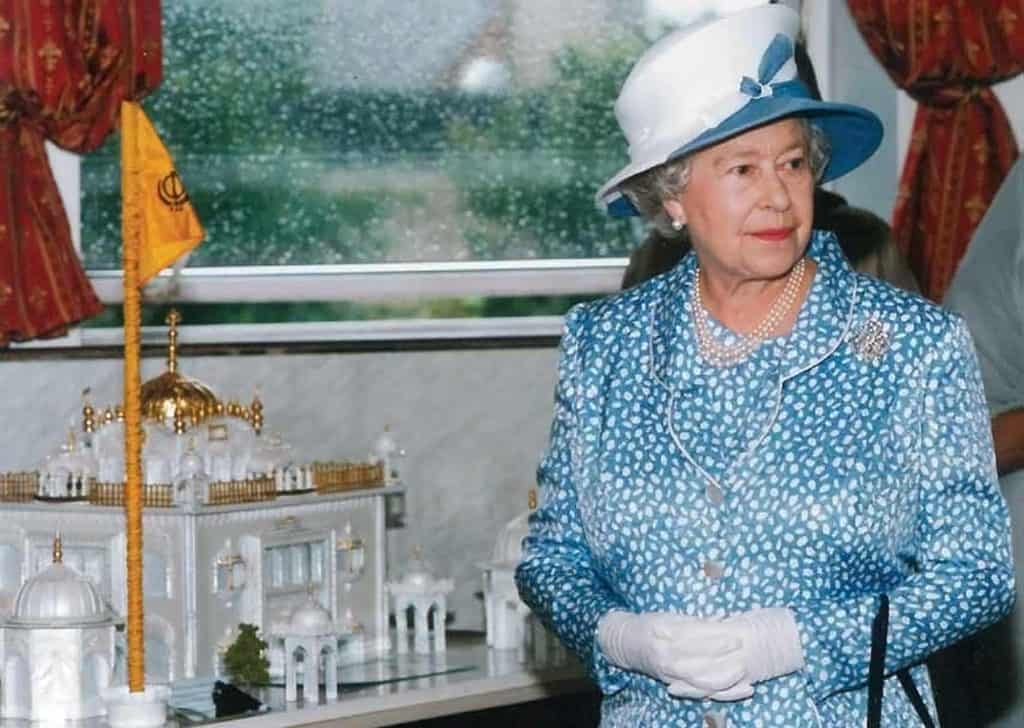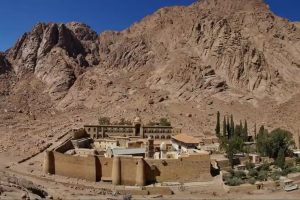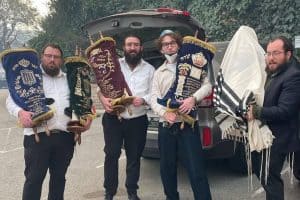(First published at the time of the Platinum Jubilee June 2022)
By Amardeep Bassey
The history of Sikhs in Britain and their relationship with the monarchy begins with the last Maharajah of the Sikh Empire.
Prince Duleep Singh was 15 and had already converted to Christianity when he was brought to these shores by his kingdom’s conquerors in 1854.
The British had gradually taken control of all India in the preceding years but had waited until Duleep’s father, Maharajah Ranjit Singh — the “Lion of Punjab” — died before taking on the might of his weakened Punjabi empire which had been a match for any European power.
Duleep Singh moved to the village of Elveden on the Suffolk-Norfolk border, and for years he lived the life of an English country gentleman, faithfully playing the role of a loyal servant and favourite of Queen Victoria and Prince Albert ,with whom he would go hunting.
That was until an epiphany made him revert to Sikhism 30 years later and demand the return of his Punjabi kingdom and its fabulous riches, including the famed Koh-i-Noor diamond that was handed to Queen Victoria as the spoils of war and adorns the royal crown to this day.
By the time he died of a stroke aged 55, penniless and alone in Paris in 1893, he had styled himself as the “implacable foe of the British people” and spent his final years lamenting the loss of his identity and fighting for the return of his kingdom.
Duleep Singh’s third daughter, Princess Sophia Singh, later became a famous suffragette in the UK. She was a leader in the Women’s Tax Resistance League, which advocated for refusing to pay taxes in protest of women’s disenfranchisement.
And she did this all while living in a palace apartment given to her by Queen Victoria.
Duleep Singh’s ignominious demise is still mourned by many British Sikhs today — his grave in Elveden is a site of pilgrimage for Sikhs across the globe — and his tribulations taints their relationship with Britain and in particular the monarchy.
In the ensuing decades, however, Britain built what could be deemed a “special relationship” with the Sikh nation. In 1857, with Duleep safely ensconced thousands of miles away in Norfolk, Sikh soldiers sided with the British during the Indian Mutiny.
Decades later, thousands of Sikhs died fighting in the two world wars for the “mother country.” Conversely, it was mainly Sikhs from Punjab who were executed by the British for their armed opposition to the Raj.
In late 2018, a statue of a Sikh soldier, erected to commemorate the Indian contributions in the world wars, was vandalised outside Britain’s oldest Sikh temple in Smethwick, West Midlands.
Young British-born Sikhs later privately admitted that they had scrawled the words “Sepoy no more” — a term referring to Indian soldiers who served in the British Indian Army — across the 10ft memorial. Police treated the incident as “racially aggravated criminal damage”, but no one was ever arrested.
However, these martial links alongside the historical connections between the Sikhs and the British monarchy have meant that among minority groups in the UK, the British have often regarded Sikhs as a “favoured community”.
This favouritism has served British Sikhs well over the years, for instance allowing for the successful negotiation of opt-out clauses relating to wearing the turban instead of motorcycle helmets, as many policymakers in the 1970s and 1980s retained a collective memory of turbaned Sikhs fighting for the British army.
This goodwill appears to continue to this day and appears to be reciprocated as shown by a 2013 survey of British Sikhs that found 95 per cent are proud of being British and of living in Britain. But scratch beneath the surface and it’s not hard to discern a sharp generational divide.
Queen Elizabeth II, for many first-generation Sikhs who arrived from the Punjab in the 1960s and 1970s, is their Queen too: a monarch who has never harmed the Sikhs and indeed “allowed” them to settle in her country.
This week as the nation celebrates the Platinum Jubilee, many older Sikhs will no doubt be feeling proud and taking part in local festivities. They include Sukhjeevan Singh Kandola, a Sikh giani, or scholar, who has been invited to the service of thanksgiving at St Paul’s Cathedral on Friday alongside other faith leaders.
He said: “Queen Elizabeth is a deeply devout individual and indeed the head of the Church of England. Her dedication to duty and faith is most admirable. I often feel the character, virtue and piety of the political class is at a rapid decline. In such a world, Queen Elizabeth’s life is a rare and stable source of inspiration for all people, especially those of faith.”
However, it is quite telling that only a handful of Sikh organisations and temples representing 700,000-odd Sikhs across the country, are organising any kind of jubilee celebrations at all. The Queen, it appears, has never publicly mentioned the Sikh nation by name in any context.
In 1997 she made a controversial trip to the holiest Sikh shrine, the Golden Temple in Amritsar, defying Indian government warnings.
Inder Kumar Gujral, who was then India’s prime minister, said the visit could be dangerous because Sikhs living in the city were still angry about the 1919 Jallianwala Bagh massacre when British riflemen who declared a peaceful Sikh gathering against colonialism was “rebellious”. Hundreds were killed.
But Sikh elders were keen to host the Queen and as a mark of respect she was even given special dispensation to wear socks in the temple, rather than walk barefoot, which irked some Sikhs.
The trip, however, was overshadowed by demands for the Queen to apologise for the massacre at Jallianwala Bagh — just yards from the Golden Temple complex.
In 1940, a Sikh revolutionary, Udham Singh, took revenge for the massacre by travelling from India to Caxton Hall in London where he shot dead General Sir Michael O’Dwyer, a former lieutenant governor of the Punjab.
At his Old Bailey trial for murder, Udham said: “He deserved it. He wanted to crush the spirit of my people so I have crushed him.” He was found guilty and executed.
Mr Kandola said: “I certainly don’t think there should be a demand for an apology for the atrocities of colonial India. The truth is the Raj formed the basis of deprivation and development of kingdoms such as Punjab. What should be demanded is further support for those that are migrating or have migrated from ex-colony countries.”
He added: “Communities with colonial backgrounds are often triggered by the monarchy because of deep-rooted intergenerational trauma. Despite differences in perspective, I believe there is always room for further discussion from all sides of the debate but there is a need for more sensitivity and respect from all sides.”
That view not necessarily shared by young British Sikhs such as Shamsher Singh, a British-born Sikh and co-founder of the National Sikh Youth Council.
He said the Queen and monarchy’s silence on the Jallianwala Bagh killings was “telling” and added: “Queen Elizabeth didn’t order the Jallianwala massacre but she has had ample time to apologise on behalf of the British establishment which she heads.
“Since then, thousands of Sikhs have sacrificed their lives fighting in two world wars for her but she has never reciprocated those sacrifices by simply offering an apology for the Raj and particular incidents carried out under the banner of the British monarchy.”
He continued: “Sikhs in the UK are probably the best integrated of all the minorities and it’s a shame that many have forgotten the atrocities carried out by the British in Punjab, including things like the partition. I think I speak for a lot of second and third-generation British Sikhs who in the main are ambivalent towards the monarchy but they all know about Jallianwala Bagh.” These sensitivities resonate to this day.
The last time “Sikh” and “Queen’ were mentioned together in the British press was last Christmas Day when a British-born Sikh Jaswant Chail, 19, scaled Windsor Castle armed with a crossbow.
An alarming video clip later emerged in which Chail, who was later sectioned under the Mental Health Act, apologised for “what I’ve done and what I will do”.
He said: “I will now attempt to assassinate Elizabeth, Queen of the royal family. This is revenge for those who have died in the 1919 Jallianwala Bagh massacre. It is also revenge for those who have been killed, humiliated and discriminated on because of their race.”
The experience was a far cry from the Queen’s previous media-covered engagement with her Sikh subjects, when in 2009 she got her first Sikh bodyguards.
Smiling photographs of turbaned and bearded Signaler Simranjit Singh, 26, and Lance Corporal Sarvjit Singh, 28, posing with their guns inside Buckingham Palace, were splashed across British newspapers.
Five years after her fateful trip to Amritsar, the Queen made her first visit to a British Sikh temple, or gurdwara, in 2002, as part of her Golden Jubilee celebrations. She was greeted by Gurjit Singh Samra at the Guru Nanak Gurdwara in Leicester.
Mr Samra, a senior librarian, recalls: “It was a momentous occasion and I was impressed how sensitive the Queen and her entourage were. Security for the day was led by some Punjabi girls and the Queen spent three hours at the temple.
“She bowed before our Holy Book, although I noted her head didn’t actually touch the floor. She was given an honorary Sikh dagger and some flowers and she was very thankful and pleased.”
Mr Samra said he escorted her around a Sikh museum in the temple. “She looked at the artefacts and images which had pictures of Sikh martyrs including some who the Indian authorities have later deemed as terrorists. But she never asked about them and she’s above all this petty politics.”
He added: “As Sikhs our only sovereign is God and his gurus but I would say most British Sikhs like the Queen and respect her.”
His views were echoed by Gurpreet Anand, who chairs the trustees at Khalsa Jatha British Isles (established in 1908), who said: “While I’m no expert on the Queen’s life, it’s apparent to me that at least in public life she has led a balanced approach reflective of a line from Sikh holy scriptures which says, ‘No one is my enemy and no one is a stranger. I get along with everyone’.”


















